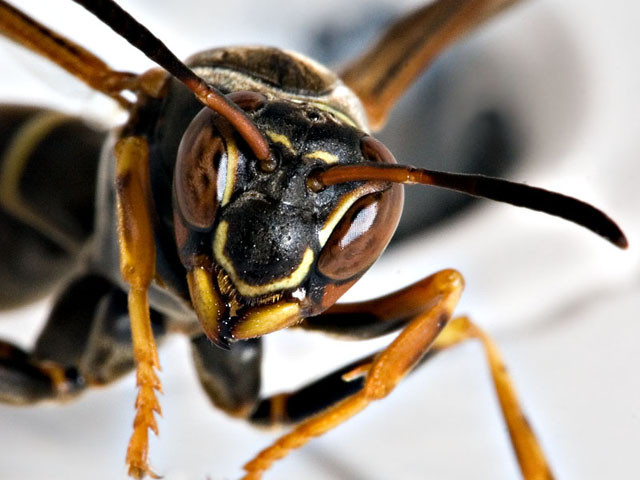It was 1995, Isle of White, UK. A natural park and wild trails. This geek kid pale as chalk, his glasses dangling on blue strings, stops to rest by a bench and recalls Narnia. He hovers near his aunts. This is me at eight on the day I became a spheksophobic. What, you ask?
Simple. The vanilla ice cream stuck to the corner of my tee had invited the attentions of a stray wasp. What followed was the delivery of a spheksophobia-inducing sting of mythical proportions; the epic and unmistakable shriek of Pakistani child ripped at the English isle. Since then I’ve lived in the grip of this otherwise hilarious psychological defect, what is deemed “an irrational fear of small, stinging insects.”
Symptoms of spheksophobia include: a feeling of uncontrollable anxiety upon thinking or exposing self to the feared object, a Jihad-like devotion for doing everything possible to avoid said object, and my personal favourite the inability to function normally because of anxiety. Unfortunately for me, the local wasp community (codenames: Tamboori; Zamboor) happens to be very active and racially diverse.
So it’s not just the plebeian wasps I put up with. It’s my deference to these winged Darth Vaders and a fear-turned-scholarly-obsession that have propelled me to publish my own study for concerned citizens.
I leave you, my readers and kindred spheksophobics, with an extract from my work:
“On the Social Behaviours and Mores of Vespula Vulgaris”
This particular genus of local Hymenoptera is as multifarious as it is common — geo-specific species range from hard-working yellowjackets (Vespula flavopilosa) to Hornets and the ever-elitist Great Black Wasps (Sphex pennsylvanicus).
It is important to note that most visible varieties of ‘wasp’ are determined by their social constructs and immediate environments.
For example, the exclusive (and most venomous) ‘upper caste’ of the F-6 and Margalla Great Black Wasp and Hornet can be spotted idling around Mocca Coffee and Gloria Jeans in Kohsar Market. They fly low, occasionally sporting red and brown plumage and are attracted to floral scents, bright colours, summer lawns, cappuccino froth, your weekly issue of GT Magazine and sparkling Channel clutches.
Typically they are not aggressive; yet they do maintain a strict sense of decorum and propriety along with their built-in sense of self-entitlement. You must acknowledge them politely should they approach you or end up on your table; it is equally important to watch your body language. One jerky, ungraceful movement will launch these royals into frenzy.
The middle to upper middle class variety of Hornet (Vespa Crabo) lives in tight family groups and have a special, oftentimes insatiable, fondness for consumer and luxury products. True to this hypothesized predilection, vespaculturalists have noted the special appeal LG air conditioners have for this echelon of wasp.
House owners have been warned to take special care with the repair or re-installation of AC units. This variety also enjoys meat and leftovers of Palao, Biryani and Chutnee- they hold family picnics on these remains.
The working class—and much smaller—Vespula Flavopilosa conducts its day to day labor in busy locations like Aabpara. It is thinner than its socially prominent counterparts, bordering on malnutrition, is yellow to orange in colour and mostly keeps to itself, intent on concluding a hot day’s work. Again, they are too consumed by the harsh realities of their low-income existence to resort to aggression. Simply give them a wide berth for movement so they won’t hurtle into you.
However, that is not to say that Flavopilosa isn’t curious. Accustomed to blue-collar trappings, dust and the smell of perspiration-laden shalwar, these proles hold a deep fascination with the more ‘up-market’ crowds that gather outside print offices and banks.
They will zip past with a quick “zzzzslalaykum” on their way to collect their daily rations from leftovers at the various khoka outlets in Aabpara Market.”
Published in The Express Tribune.
The Capital Vulture: The life and times of a spheksophobic
I was eight on the day I became a spheksophobic. What, you ask?



COMMENTS
Comments are moderated and generally will be posted if they are on-topic and not abusive.
For more information, please see our Comments FAQ